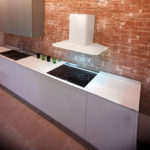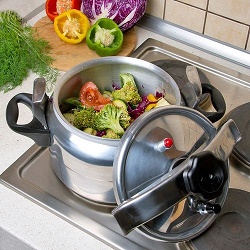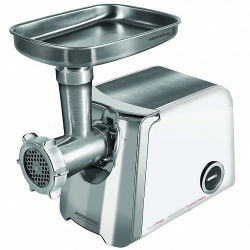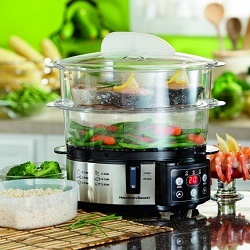What are exhaust fans for?
In the apartments and private buildings in the design provides ventilation mines. But often the natural circulation is not enough. Often in apartments with insufficient airing, especially in bathrooms and toilets, black mold appears on the walls due to high humidity. In such cases, install an exhaust fan in the bathroom or bathroom.
Content
Varieties of fans
This device is of different types:
- axial;
- radial;
- centrifugal;
- roof
Axial
The axial type of household units has a standard form with blades located around the center. The blades are mounted on a disk that is mounted on the axis of the electric motor.The impellers are installed at a certain angle to the axis of rotation, for suction of air and moving it through the unit. On the front side is set collector grid, which improves the aerodynamics of the device. Installation of such devices for the bathroom (bathroom) is very simple - they are installed directly into the hole of the shaft.

Radial
A radial-type unit is a wheel with plates (blades) parallel to it. The blades capture air during rotation, push it out to the device casing, creating increased pressure due to centrifugal force. Next, the stream is pulled out through the outlet.
The blades in such devices are bent backwards or forwards, and air can be sucked either from one side or from both. If the blades are folded backwards, then this leads to a noticeable reduction in power consumption.
Even this design allows you to pump an increased volume of air mass and cope with large loads.
In units with blades curved forward, the parameters are in many ways similar to the ones described above. But there are differences: with this design, the size of the wheel decreases, and the engine speed decreases,in turn, this fact allows to reduce the size of the device, as well as reduce noisepublished by him at work.

Centrifugal
Centrifugal units are also called channel. They appeared on the market a little later than other types, but they had already gained popularity due to the ease of installation and high performance. It is advisable to use them in rooms with an area exceeding 15 m2.
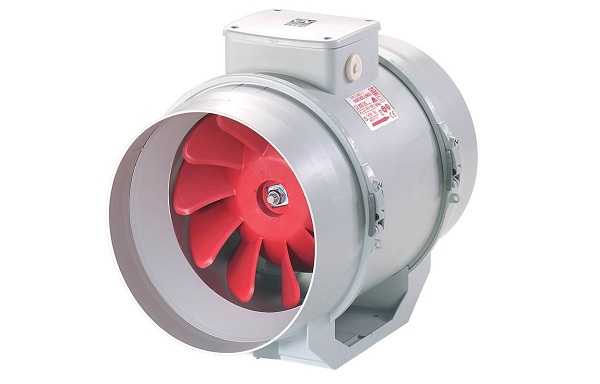
The duct exhaust fan has low noise emission and high power. He is able to pump air from the premises through a network of paved channels. Air ducts (can be round or square) are usually laid under the ceiling and hidden by a box of drywall or a false ceiling.
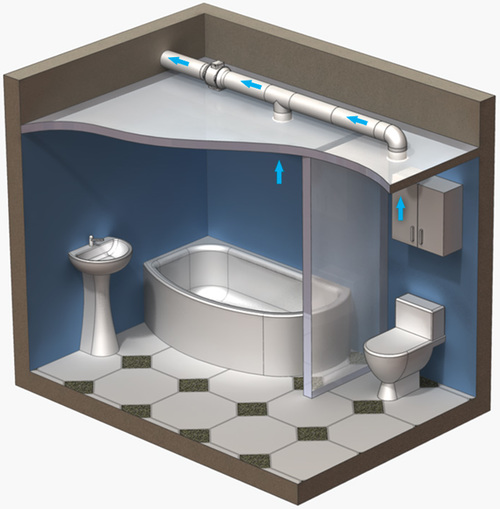
Channel units are allowed to be inserted into the trunk or at its entrance. For example, such fans are used in channel humidifiers.

Rooftop
Unlike duct installations, this design is mounted directly on the roof and is intended for pumping out air from the premises. Channels are laid from it into the necessary rooms, and it consists of a fan, a drive and a gasket to protect against vibration.

All these components are assembled in a single package. The devices use radial or axial types of units with an increased number of blades. The air duct should also have a check valve.

Exhaust power
Exhaust fan power (installation capacity in m3/ h) for a bathroom or bathroom, you can calculate according to the formula: Q = L x B x H x 6, where:
- Q is the value of the installation performance;
- L is the length of the room;
- B is the width of the room;
- 6 - coefficient (means the number of cycles of change of air in the room).
According to the standards, the change of air in the bathroom should occur 6 times in 1 hour, if the family has no more than 3 people (for the kitchen hood, the coefficient reaches the figure - 15). If there are more people, the coefficient rises to - 8. For example:
- bathroom length is 2 m;
- the width of this room is 2.5 m;
- height - 2.75 m.
- 4 people live in the apartment, which means that we choose the value - 8.
We perform the calculation according to the formula: Q = 2 x 2.5 x 2.75 x 8 = 110 m3/ h This means that the minimum performance of the device should be about 110 m3/ h
Features hood for toilet
The exhaust fan for a toilet can have the additional functions facilitating your life:
- The fan in the toilet has built-in timer, thanks to which the device, after switching off, continues to work for a certain time (the range of operation of the time relay can be in the range from 2 to 30 minutes), thus providing additional ventilation. This function is convenient to use when the light switch is connected to the unit.
- Some household models have Motion Sensorwhich, when the volume of a room changes, turns on the device and turns it off when a person leaves the room. There may be a combination of a timer and a motion sensor in one unit.
- Most models go on sale already with check valvewhich does not allow air to flow in the opposite direction, from a shaft or channel.

There are models with blinds on the front panel that are closed manually. When closing these blinds, the movement of air stops completely in both directions.
Bathroom fan
Fan for bathroom hoods not much different in its functionality from the same unit for the bathroom (with a check valve, various sensors, etc.). Unless, to the device some useful improvements have been added.
-
- Fan with humidity sensor - a hygrostat, able to determine the level of humidity in the room, and when it rises above the normal level (65%) include the hood.
- Built airing function, at which the device operates at minimum speed, thereby ensuring easy air exchange in the room. With increasing humidity, the unit automatically increases power.
- Spray hood protection is also considered a useful improvement for small-sized bathrooms, when there is a high probability of water getting into the unit. Whether household appliances have such protection can be found in the instructions for them.

The figure, for example, shows an axial fan MF100 / 4L for exhaust having spray protection.
- There are devices with built-in clockhelping to control the time spent in the shower. The function is not very necessary, but sometimes it helps not to be late. Such a device with a decorative finish can be used in the kitchen as a kitchen fan for exhaust.

Exhaust noise parameters
Exhaust units, especially channel, can produce aerodynamic noise, which can be significant in devices with high power. In order not to experience discomfort from the sounds of a working air exhaust system, there are silent fans that are much more expensive than normal ones. This is also important for kitchen hoods, among which there are also practically silent options.
Silent operation of the device is achieved due to the design features:
- the engine is attached to the body through rubber liners, due to which the transmission of vibrations from the motor is reduced;
- the body is made of solid and thick plasticwhich also reduces vibration;
- the beat of the motor shaft is reduced to almost zero. This was achieved through the use of high precision bearings with special grease.
In cases with duct devices for pumping out air, unpleasant aerodynamic noise can be dealt with by silencer for air ducts. It is built into the line between the fan and the outlet, which are connected by a channel laid for the bathroom (bathroom), and dampens sound waves leaving it.

Be sure to exit the pipe to the street should be with a check valve.
Installation Tips
After you have already decided on the model hoods for the bathroom (bathroom)In order to meet the design requirements for power, noise and functionality, it is necessary to read some useful guidelines for installing the unit.
- Hood for the bathroom should be located as high as possible and closer to the ceiling. It must be located away from the door, ideally opposite the entrance. In this case proper circulation air provided.
- If the device does not enter the ventilation duct, it must be expanded using an ordinary chisel and a hammer. The fittings can be cut by the grinder.
- The device can be fixed in the channel window with liquid nails or fasten with screws, pre-drilled holes with a perforator and hammer in plastic dowels.
- When properly installed exhaust fans, the back of the unit with a non-return valve should be completely hidden, and the decorative front panel should fit snugly to the wall.
- For a good fit body to the wall can be used sealant (silicone), paving it with a thin layer under the base. A snug fit will relieve the device from unnecessary vibrations, and the noise level will be reduced.
- At connection to the exhaust network air device must have a separate switch.Often the device is connected in parallel with a single-button light switch, but sometimes this method is inconvenient. For this purpose it is better to install two-key.
- In the end, it remains to attach a decorative grille, which is most often mounted with the help of latches.
Through the use of exhaust devices, the problem associated with high humidity in the bathroom, bathroom or kitchen is solved (ventilation with an exhaust hood in the kitchen can have purifying filters). Installing a kitchen hood also has its own nuances, as well as its connection. Forced circulation improves air exchange in the house or apartment, creating a healthy microclimate in general. If you did everything correctly, following the recommendations, the appearance and reproduction of fungi that are harmful to the household of the household will be impossible.

/rating_off.png)






